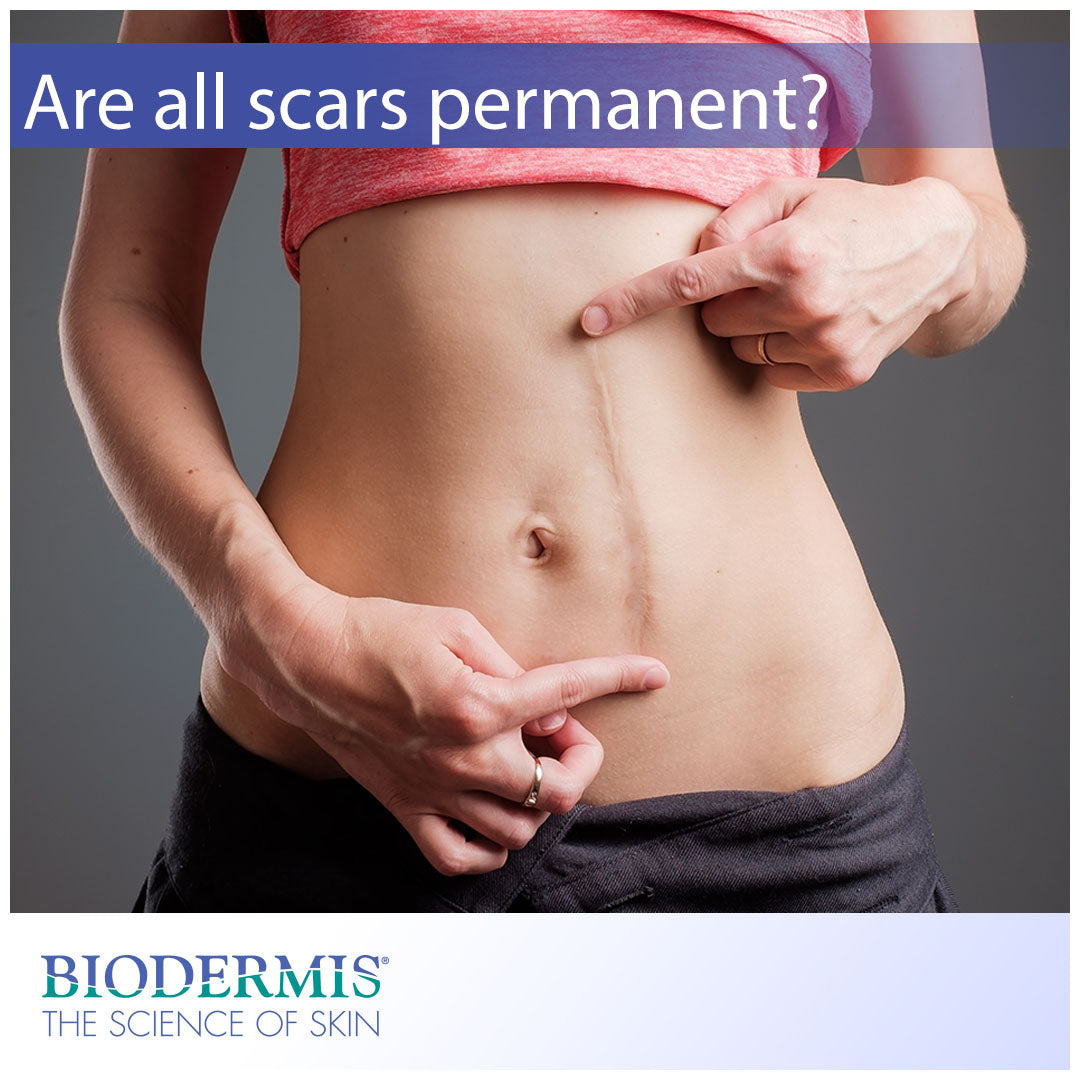All scars are the result of a complex and dynamic wound healing process that passes through several distinct stages: hemostasis, inflammatory, proliferative, and maturation (or remodeling). The way our scar looks after the wound heals depends on a number of genetic and environmental factors. Some smaller wounds will heal nicely and leave only a small white scar that is barely noticeable. Other, more serious wounds, can lead to excessive scarring known as keloids or hypertrophic scars. Atrophic scars, which result from severe acne, may be visible for a lifetime without proper treatment. While most scars are permanent, there are ways to help them fade over time.
Scar appearance
The way a scar appears is largely determined by the type of wound we attain, our genetics, and environmental factors. However, the best way to predict whether or not a scar will fade over time is to look at a person’s past history of scars. If you once had a scar that healed up nicely, there is a chance that a new scar will heal in a similar way. On the other hand, if you are predisposed to developing keloids or hypertrophic scars, then it is likely you will get these types of scars again. Keloids, which are marked by their lumpy appearance and overgrowth of scar tissue, may not go away without the right kind of medical intervention. Hypertrophic scars, with their raised, red appearance, may take much longer than a normal scar to fade. For the most part, scars are permanent, but they can be faded using clinically-proven scar therapy products.
Raised and discolored scars are the product of collagen buildup during the proliferation and maturation stages of wound healing. Collagen overproduction is a normal part of wound healing but the end result can sometimes leave us with a keloid or hypertrophic scar. On the other end of the spectrum are atrophic scars, which are marked by a loss of collagen in the skin. Atrophic scars develop from severe acne and can appear sunken or pitted. Treatments for atrophic scars are different for scars that are caused by collagen buildup. Dermatologic interventions to help with pitted scars may include chemical peels, microneedling, or laser treatments. Treatments for raised and discolored scars are simply and effectively performed by using medical-grade silicone gel.
Silicone gel for scars
Topical silicone for scars is an evidence-based intervention for flattening and fading scars over time. Silicone works simply and effectively through two mechanisms of action: dermal hydration and collagen regulation. All scars need an ideal environment, also known as homeostasis, to heal in the best way possible. Silicone induces essential moisture at the scar site while also allowing oxygen to pass through its semi-permeable layer. This has the effect of triggering keratinocytes to scale back collagen production, which help to flatten and reduce the discoloration of abnormal scar types. Silicone gel is hypoallergenic and safe for children and adults with of all skin types. In most cases, silicone should be used as soon as the stitches have been removed and the wound is fully healed. However, given that scar tissue continues to remodel for up to two years after the wound healing event, old scars can be successfully treated with topical silicone treatment. Silicone for scars can be purchased through your physician or online at biodermis.com.
Biodermis is an innovative market leader with 30 years of expertise in the medical silicone industry. Visit Biodermis.com today to explore a complete range of scar management and post-operative care solutions.
PHYSICIANS AND MEDICAL PROFESSIONALS: REFER OR RESELL?
Biodermis offers custom tailored referral programs designed to simplify and reduce the cost of your patients' post-op care. Additionally, we offer professional pricing if you opt to retail our products. Give us a call at 800.322.3729, and we will be happy to provide additional details on these programs.




